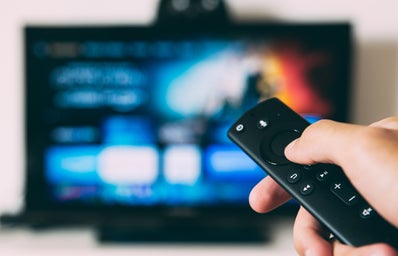During the pandemic, I have spent a lot of time in my house, alone. I’m okay with this most of the time, but I do have to keep myself from succumbing to mind-numbing boredom. One thing I’ve done with my time is work my way through my massive “to watch” list of shows across multiple streaming platforms. As I watched these shows, I noticed something many of them had in common that confused me.
Many shows either feature friendship as a core theme or a friend relationship around which the show is centered. There is absolutely nothing wrong with this. As much as I like to spend time alone, I do believe that friends are essential to a healthy and fulfilling life. However, I have not seen many TV friendships that are good examples of a healthy friendship. Particularly, I have a problem with a pattern I’ve seen in multiple on-screen “best friend” pairings.
I do not believe many on-screen best friends are actually good friends.
In the Disney Channel show Girl Meets World, the audience follows Riley Matthews and Maya Hart through middle and high school. These two girls are long-time best friends and the series emphasizes their bond as their strength while they navigate the ups and downs of adolescence. As important as their friendship is to the show, there are a few moments that troubled me. Most troubling was the handling of Maya’s character development in season 3.
By this point, the main friend group (which includes three other boys and one other girl) have entered high school. As such, it would not be unreasonable to assume that they have matured—even just a little bit—in comparison to their seventh grade selves. Maya was introduced as a low-performing troublemaker, a foil to protagonist Riley. By season 3, both Maya’s academic performance and behavior had improved, but this was written something bad. Characters—including her best friend Riley—began to tell Maya that Riley was too good of an influence on her and that she was losing her identity. Riley genuinely believes that Maya changed to be like her, not that Maya may be maturing and trying to figure herself out in her own way, you know, like a teenager. Riley exhibits little personal growth—she is stubbornly naive and self-centered all the way through the end of the series. An appropriate response to a friend changing in an unexpected way would be to communicate to better understand what is going through their head and how they can be present for their friend during this process. An inappropriate response would be to see your friend going through something, assume she’s copying you, and then try to urge her back into behavior that wasn’t good for her in the name of self-discovery.
Another example of this odd “bad best friends” dynamic is in the Cartoon Network show, Adventure Time. One of my favorite TV shows of all time, Adventure Time mainly follows best friends Finn the Human and Jake the Dog through their adventures in a post-apocalyptic world full of monsters, magic, and science. Not only are Finn and Jake self-proclaimed best friends, they are also adoptive brothers. Their bond is a centerpiece of the show, so it would make sense for this relationship to have its highs and lows while remaining steadfastly loyal. But at the start of season 5, the strength of their relationship is put to the test. Through a (convoluted for non-viewers) series of events, Finn from the previous 4 seasons presumably ceases to exist after making a powerful cosmic wish that accidentally creates an alternative timeline known as “Farmworld.” Eventually, this timeline falls apart. When he finally realizes what’s happening to Finn, Jake uses his own cosmic wish. A good best friend, seeing his other half in extreme danger and distress, would not hesitate to use his potentially reality-altering cosmic wish to save his friend.
Jake wishes for a sandwich.
While Farmworld Finn’s world further descends into chaos, Jake vibes with cosmic beings, oblivious to the increasing crisis of his brother/best friend. The cosmic being in charge of handing out cosmic wishes does later manage to coax Jake into making a better wish. But the rest of the series is clouded by the fact that Jake chose to use such a powerful tool to satisfy his own desire rather than to save his best friend/brother from a second existential doom.
There are other shows with a “bad best friend” problem—Cartoon Network’s Regular Show comes to mind—and it’s a curious phenomenon. Of course, it’s important for unhealthy and less-than-ideal platonic relationships to be portrayed. But the opposite should also be present. Good friendships, where two people support each other during the good and the bad, where two people work through disagreements together instead of instantly turning to petty blows against each other, where two people check each other when they are wrong and help each other grow should be shown. But it is difficult for me to name a TV friendship where they do these things.
We need more good friendships on the small screen. Best friends, even on television, should actually be best friends.


